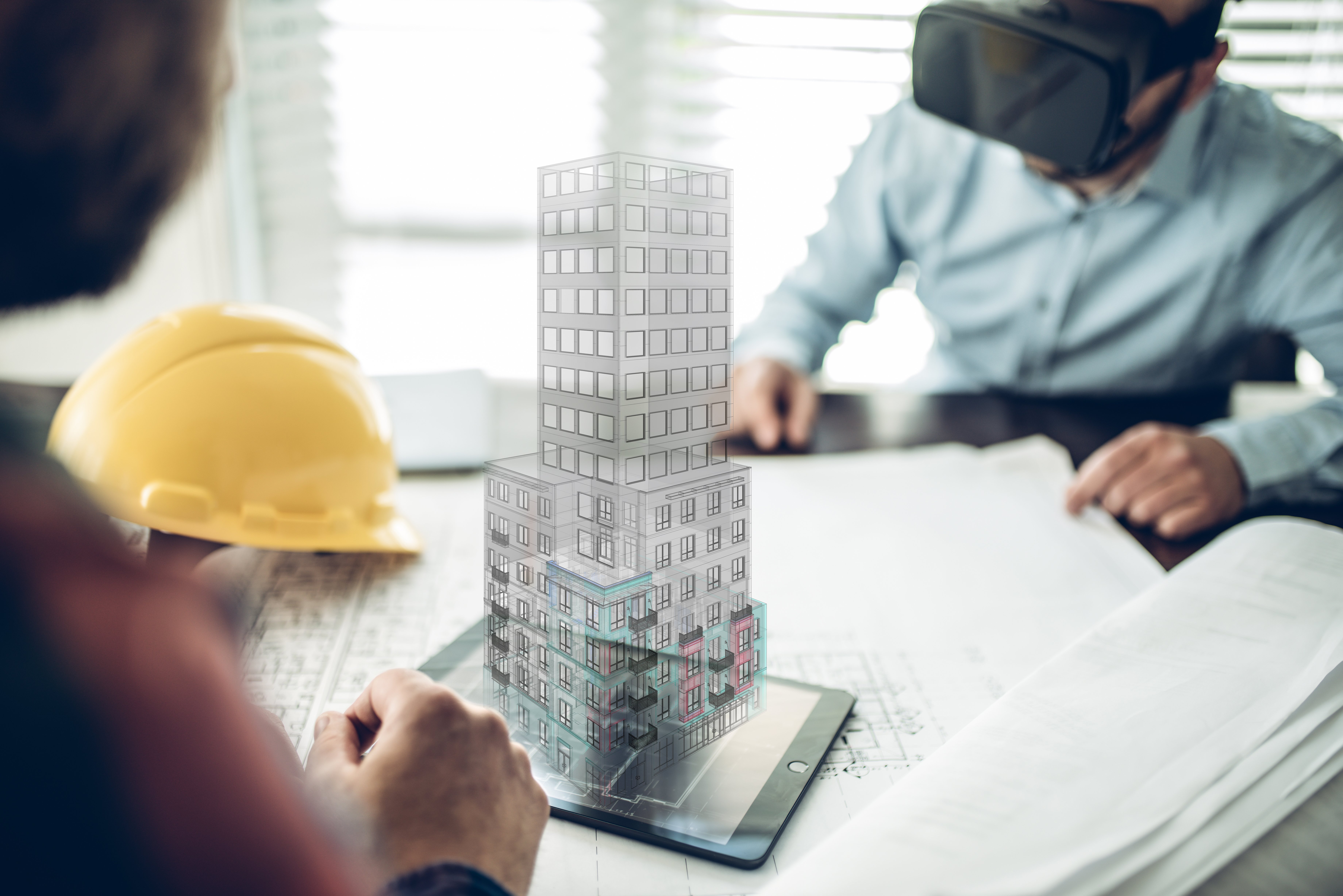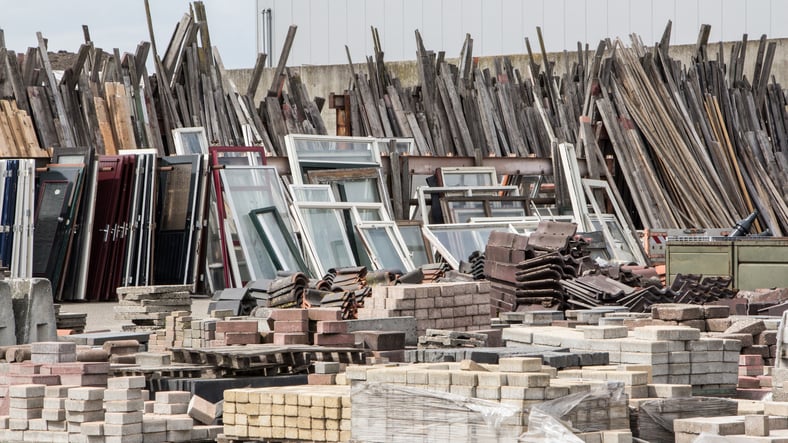
Editorial Note: This article was brought to you courtesy of Rose Morrison, managing editor of Renovated.com.
Inflation has been an ongoing problem for construction companies since the moment the COVID-19 pandemic went global. When supply chains became stagnant and demand dropped, the cost of essential tools, materials and equipment increased. Although the prices are slowly recovering, inflation continues to put pressure on construction budgets.
The Current State of Inflation in Construction
Although affordability remains an issue for many contractors, the decline of material prices in 2023 indicates that inflation is cooling. Lumber, steel, concrete and gypsum are all down from 2021 and 2022. Freight and transportation costs have also decreased, which means you might have the budget flexibility to branch out to more suppliers.
Looking ahead to 2024, total construction costs are expected to see modest growth between 2% and 4% in the United States and Canada. You can look forward to more stable material prices and shorter lead times, but electrical components might be an exception. The American Institute of Architects projects a similar 2% increase in construction spending.
While 2024 looks more promising than previous years, we’re not out of the woods yet. You still need to operate with a tighter budget while the economy is in recovery. Whether the Federal Reserve decides to raise interest rates or not will significantly affect the real estate market and construction industry by extension.
Now that you have a clearer understanding of the construction industry’s inflation situation, let’s talk about some effective strategies to keep your costs down and remain profitable despite less-than-ideal prices.
Buy Into Big Data
“Big data” is a growing collection of software that uses predictive analytics through large datasets to help contractors, architects and other construction professionals make more informed decisions about their projects. Here are some big data technologies that can help you lower costs and compensate for inflation.
1. Building Information Modeling
Building information modeling (BIM) could be your primary weapon in the fight against inflation. BIM is a modeling software that creates highly detailed three-dimensional renderings of building designs. Through these renderings, BIM provides real-time data on the costs of each step in the project. You get a full view of the expenses from the design process to the clean-up stage.

BIM also helps contractors avoid extra costs and downtime from rework. Rework costs typically fall between 2.4% and 12.4% in construction, but they sometimes reach as high as 20%. With BIM, you can lower these costs by addressing safety hazards, equipment deficiencies, security threats and human engineering errors in the building’s structure.
Reducing rework is especially valuable during the opening and closing stages of a project. BIM is the perfect platform to create your initial design specifications and closeout documents. As the project goes on, you can review the building’s update history and identify inefficiencies as they appear.
If you’re an independent contractor, you can even use BIM as an assistant project supervisor. During times when you can’t monitor the site by yourself, you can utilize BIM’s clash detection feature to prevent collisions, falls and other common workplace accidents. This feature alone can save you from repair costs and workers’ compensation claims.
2. AI and Blockchain Technology
You might not be able to control inflation, but you still have full control over your spending. That’s where artificial intelligence (AI) and blockchain technology come into play. AI-powered project management software is automated to monitor your transactions, identify irregular spending and ensure the early detection of problems with tools and equipment.

Blockchain technology’s role becomes important when you’re buying from new suppliers and need to synchronize data across different networks. It encrypts the transactions so only the two parties can see them, creating full trust and transparency when making online purchases. Now you can safely carry out contract negotiations without the need for an intermediary and mountains of paperwork.
3. IoT Tracking Solutions
The Internet of Things (IoT) specializes in tracking and improving project visibility in construction, manufacturing and many other high-risk work settings. It consists of many sensors that exchange data with each other. Through these sensors, you can monitor all expenses and identify any reckless spending — especially from equipment and material deliveries. 
For example, you can use IoT-connected sensors and actuators to track the condition of tools and heavy machinery. You can do the same thing with “wearables” on employees. Sensors are available for hardhats, vests, gloves and other personal protective equipment that monitor key health metrics and productivity.
Improve Equipment Maintenance Practices
Equipment maintenance costs can have a wide variance from project to project. When the equipment is more specialized and the work conditions are harsh, the costs naturally go up. However, to compensate for inflation, you should aim to keep your maintenance budget between 2-6% of the total replacement asset value for each project.
There are many effective strategies for improving equipment maintenance practices and minimizing costs. For starters, you must follow a consistent cleaning and inspection schedule. This task might add to your construction crew’s workload, but it’s essential for identifying equipment deficiencies and preventing costly downtime later on.
Operator training is another key aspect of preventative maintenance. If your employees are using the equipment responsibly, you don’t have to devote so much money, time and labor to future repairs. A well-trained operator is less likely to damage the equipment and can provide valuable technical insights about its health.
You should also take full advantage of equipment warranties and understand their benefits. Warranties serve to protect equipment owners from the costs of damage or parts failures that were caused by manufacturing errors. Proper maintenance is the only surefire way to prove the manufacturer was at fault if something goes wrong.
To avoid getting blamed for equipment deficiencies and keep warranties active, you must follow the prescribed maintenance instructions outlined in the operator’s manual. Read the fine print of each machine’s warranty and know what repairs it covers. Armed with this information, you can adjust your routine maintenance plan accordingly.
Branch Out to Alternative Materials
When budgets are tight, you can’t afford to rely on a single supplier for building materials. You need to have multiple suppliers and branch out to alternative materials in case your original plans fall through. Look for suppliers who work with other contracting companies and have convenient locations so you can minimize delivery costs.

Stockpiling raw materials has become a common strategy in manufacturing and retail spaces in the post-COVID era. Due to supply chain stagnation, many companies have acquired empty warehouse space to accumulate raw materials in anticipation of future shortages or delivery delays. Construction companies can utilize the same strategy.
Expanding your material selection is also a great opportunity to work with eco-friendly suppliers and introduce sustainable materials to your projects. You don’t have to use them immediately, but you can keep them in reserve for future clients. Having sustainable alternatives will become more important as the construction industry adopts more eco-conscious attitudes.
Conduct Routine Vulnerability Assessments
Although material shortages have improved since 2021, the ongoing problem of high prices might still put certain commodities out of your budget. A setback is bound to happen at some point, whether it’s due to affordability issues or delivery delays. That’s why you need to conduct routine vulnerability assessments and identify your weaknesses.

Most companies do vulnerability assessments every quarter, but you should consolidate them into a monthly schedule. You should also conduct an assessment when a security risk emerges, when adding a new supplier, when a supplier changes its prices or when you introduce new technology. Any change to your operations that can significantly affect your budget requires a thorough analysis.
Emphasize Waste Reduction
Waste reduction is a great way to keep construction costs down and contribute to a better environment. You get to save money from dumping excess materials at landfills and put the leftovers to better use. Many construction materials are reusable or recyclable, including lumber, steel, glass, brick, concrete and gypsum board. 
The Environmental Protection Agency also recommends salvaging undamaged parts such as doors, hardware, appliances and light fixtures and using them in future projects. From now on, follow this general rule — if the material still has a potential function, hold onto it and find a new purpose instead of throwing it away.
Don’t Forget About Value Engineering
Lastly, you can’t forget about value engineering. This money-saving strategy requires collaboration between the contractor and customer. During the initial planning phase, sit down with your customers and try to simplify the building design with cost reduction in mind. Homeowners are trying to save money too in this economy.
For example, you might reduce the square footage, create a more modest kitchen layout or set a firm limit on change orders. Choosing a stock building model over a custom design is another great way to fit projects into a smaller budget. The fight against inflation is much easier when customers agree to eliminate unnecessary design features.
Keep Your Costs Down and Customers Happy
The construction industry was due for a wake-up call after being so wasteful for so many years. In the post-COVID economy, contractors have now learned to be much more careful with their spending. If you want to compensate for inflation while keeping customers happy, start by investing in big data, emphasizing equipment maintenance and implementing these other strategies to minimize costs.
This is a guest post written by Rose Morrison, managing editor of Renovated.com.